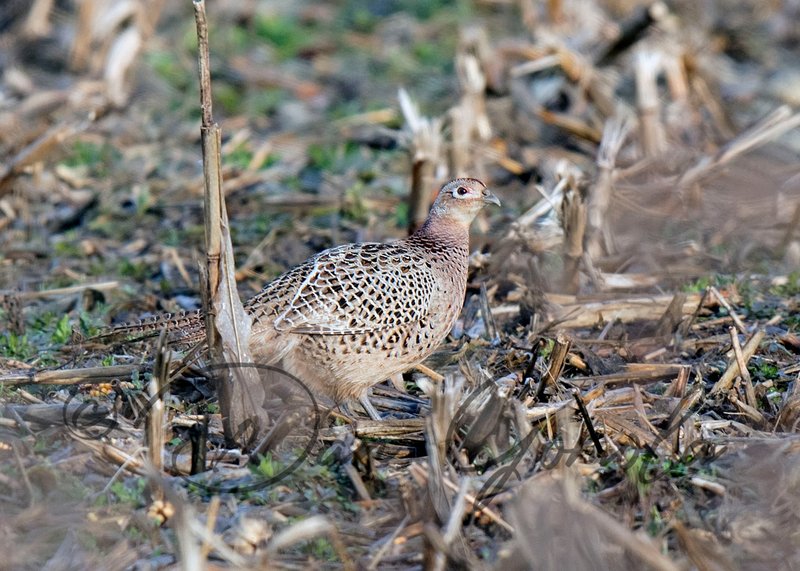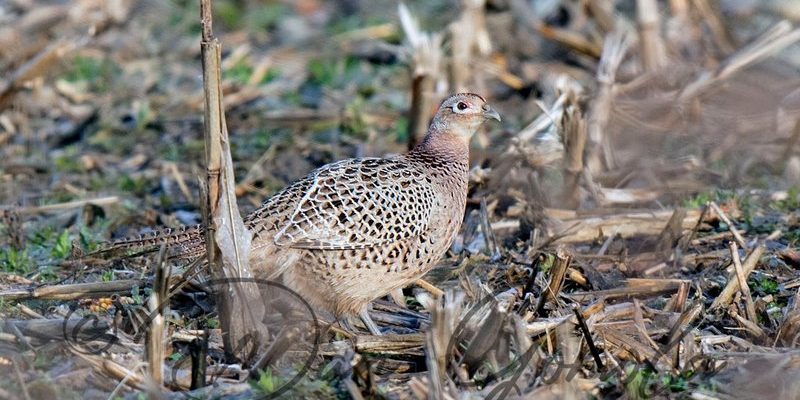
Introduction to Pheasants
Pheasants are colorful birds that capture our attention with their striking plumage and captivating behaviors. Imagine stepping into a lush forest, where dappled sunlight filters through the trees, and suddenly, a flash of iridescent green and gold catches your eye. That’s a pheasant, one of nature’s most vibrant creations. These birds belong to the Phasianidae family and are well-known for their beauty and adaptability.
Originating from Asia, pheasants have spread across various parts of the world, often becoming beloved symbols in wildlife and even cuisine. You might be wondering what makes these birds so special. Aside from their stunning feathers, pheasants are also fascinating in terms of behavior, habitat, and role in the ecosystem. This article dives deep into the world of pheasants, exploring everything from their physical characteristics to their lifestyle and the challenges they face today.
Physical Characteristics
Pheasants are medium to large-sized birds, easily recognizable by their elongated necks and colorful feathers. The males, often larger and more vividly colored than the females, can be a sight to behold. Male pheasants generally feature a mix of bright hues like metallic green, golden yellow, and deep blue. In contrast, female pheasants sport more muted tones, such as brown and gray, which help them blend into their surroundings, especially during nesting.
In terms of size, a typical male pheasant can weigh between 2 to 4.5 pounds, while females are slightly lighter, averaging around 2 to 3 pounds. Their bodies can be about 24 to 30 inches long, with their tails contributing significantly to their length. Surprisingly, the tail feathers can span almost two feet! This feathered train assists in balance and display during mating rituals.
Another intriguing feature of pheasants is their beaks. They possess short, conical beaks designed for foraging. You may see them pecking at the ground, searching for seeds, insects, and small plants. Their strong legs are suited for running, which is often their primary defense mechanism against predators. And when it comes to flight, they can achieve speeds of up to 40 miles per hour in short bursts, a handy escape tactic when danger approaches.
Habitat and Distribution
Pheasants are adaptable birds found in a range of habitats, from dense forests to open fields and wetlands. You’ll often spot them in agricultural areas where they can forage for seeds and grains. Their preference for mixed habitats means they thrive in edge environments, where forests meet open land. They are highly versatile and can even be seen in urban parks or rural gardens, showcasing their ability to adapt to human-altered landscapes.
Originally native to Asia, pheasants have been introduced to various parts of the world, particularly in the United States and Europe. In these places, you can find species like the ring-necked pheasant, which has become quite popular among birdwatchers and hunters alike. These birds often prefer areas with abundant cover, such as tall grasses or brushy thickets, allowing them to conceal themselves from predators.
Interestingly, pheasants are social creatures and are often found in small groups, especially outside of the breeding season. These flocks can provide safety in numbers, making it easier to watch out for potential threats. While they might flutter away at the slightest movement, they also have established territories during the breeding season, where males engage in vocalizations and displays to attract females.
Diet and Feeding Habits
Pheasants are omnivorous, meaning they enjoy a varied diet that includes seeds, grains, fruits, and insects. You might find them foraging in fields, scratching the ground with their feet to uncover tasty treats hidden beneath the surface. Their diet changes seasonally, with more insects available in summer and a reliance on seeds and grains during colder months.
Typically, they begin their day early, feeding during the morning hours when the sun rises, and then returning to roost in the late afternoon. They often choose consistent areas to feed, creating paths in the grass or dirt. You may also notice them foraging around farms or gardens, where cultivated crops can provide a feast of grains.
In addition to their natural diet, pheasants can also adapt to human-altered environments. In agricultural areas, they may feed on leftover crops after harvest, taking advantage of the rich food sources created by farming activities. This adaptability helps them survive in diverse environments while establishing a bond with the local ecosystem.
Breeding and Reproduction
The breeding season for pheasants typically occurs in late winter to early spring. During this time, males become particularly active, strutting their stuff to attract females. This display is quite the sight, characterized by loud calls, puffed-up chests, and elaborate movements that showcase their dazzling feathers. Males also engage in aggressive posturing, establishing dominance among rivals in hopes of winning the affections of a female.
Once a male successfully attracts a mate, the female will seek out a suitable nesting site, often on the ground in tall grass or brush. She usually lays a clutch of about 8 to 12 eggs, which she incubates for about 23 to 30 days. The eggs are camouflaged, blending in with their surroundings to protect them from predators.
After hatching, the chicks are precocial, meaning they are relatively independent and able to leave the nest shortly after emerging from the eggs. They can feed themselves almost immediately, following their mother as she leads them to foraging areas. As they grow, they remain close to their mother for protection and guidance, learning vital survival skills along the way.
Conservation Status
While pheasants are generally not endangered, some species face threats due to habitat loss and changes in agricultural practices. Urbanization and the expansion of farmland often disrupt their natural habitats, reducing the areas where they can live and thrive. This is concerning because these beautiful birds play an important role in their ecosystems, helping to control insect populations and contributing to seed dispersal.
Conservation efforts focus on preserving and restoring natural habitats, particularly in areas where pheasants are most threatened. This includes creating buffer zones between urban areas and natural landscapes, planting native vegetation, and promoting sustainable farming practices. By providing adequate habitats, we can help ensure that pheasants continue to grace our fields and forests for generations to come.
Additionally, many states have implemented hunting regulations to maintain healthy pheasant populations while allowing for recreational hunting. This balance is essential as it encourages conservation efforts, engages the community, and supports wildlife management initiatives that benefit various species.
Interesting Facts
Pheasants are filled with fascinating quirks that can surprise even the most seasoned birdwatcher. For instance, did you know that the world record for the largest pheasant was set by a bird measuring over 3 feet in length? That’s quite a showstopper! Another interesting tidbit is that the male pheasant’s call can be heard over half a mile away, especially in early mornings when they’re most vocal.
Additionally, varying species of pheasants can be found across the globe, including the exquisite Golden Pheasant, known for its radiant yellow and red plumage. You might also be interested to know that pheasants have been featured in art and literature throughout history, symbolizing beauty and sometimes even peace. Their presence resonates deeply within various cultures and traditions.
They’re not just showy but also serve critical roles in their ecosystems. By foraging and spreading seeds, they contribute to the health of their environments. Watching a pheasant can be a reminder of how interconnected life is in nature and how each species, no matter how colorful or common, plays its part.
FAQ
What do pheasants eat?
Pheasants have a varied diet that includes seeds, grains, insects, fruits, and sometimes small mammals. They forage on the ground, scratching at the soil to find food, and adapt their diet according to seasonal availability.
Where do pheasants live?
Pheasants are adaptable birds found in various habitats, including forests, grasslands, agricultural areas, and urban parks. They prefer mixed environments where they can find cover and food.
How fast can a pheasant fly?
Pheasants are quite speedy, able to fly at speeds of up to 40 miles per hour in short bursts. They typically fly to evade predators, but they also prefer running on the ground.
Are pheasants good for the environment?
Absolutely! Pheasants play a vital role in their ecosystems by helping to control insect populations and disperse seeds. They contribute to the overall health of their habitats.
What is the breeding season for pheasants?
The breeding season for pheasants generally occurs in late winter to early spring. During this time, males engage in elaborate displays to attract females.
Can pheasants be kept as pets?
While it’s possible to keep pheasants as pets, they require ample space and a suitable environment. Additionally, they can be challenging to care for due to their specific habitat needs.
How long do pheasants live?
In the wild, pheasants typically live up to 3 to 4 years, though some can reach up to 10 years in protected environments. Their lifespan can be influenced by predators, food availability, and habitat conditions.
What makes pheasants unique?
Pheasants are unique not just for their striking colors but also for their social and adaptive behaviors. They exhibit elaborate mating displays and are known for their ability to thrive in diverse habitats.
Are pheasants endangered?
While many pheasant species are not endangered, some face threats from habitat loss and changes in agricultural practices. Conservation efforts are in place in various regions to help protect these beautiful birds.
What is the difference between male and female pheasants?
Male pheasants are generally larger and brighter in color, boasting vibrant feathers, while females are smaller and have muted tones, allowing them to camouflage better in their surroundings during nesting.
How do pheasants communicate?
Pheasants communicate through a variety of calls, which can indicate different messages, such as warning of danger or attracting mates. Their vocalizations can carry over long distances, especially during the breeding season.

